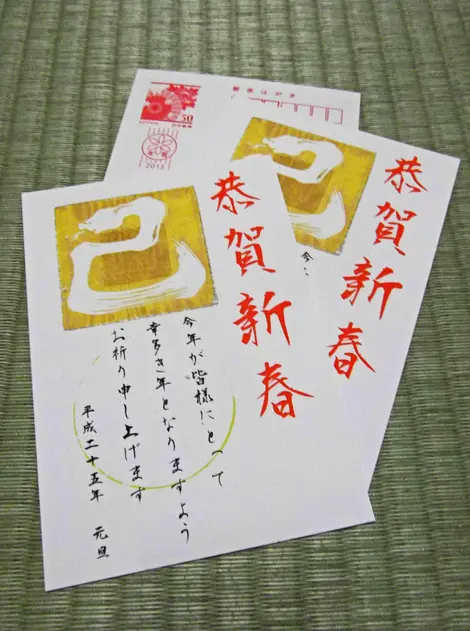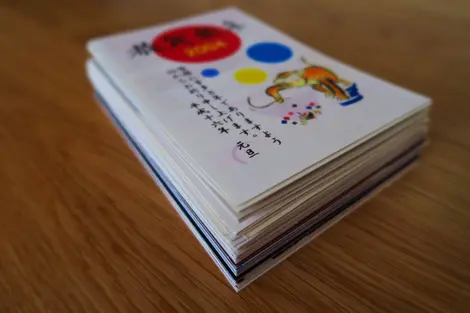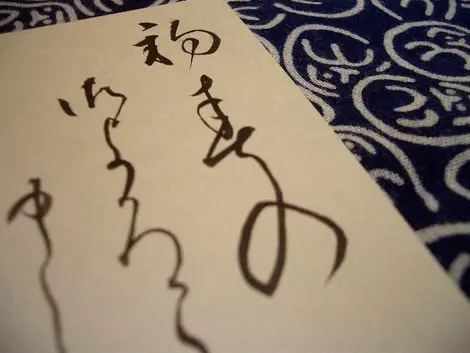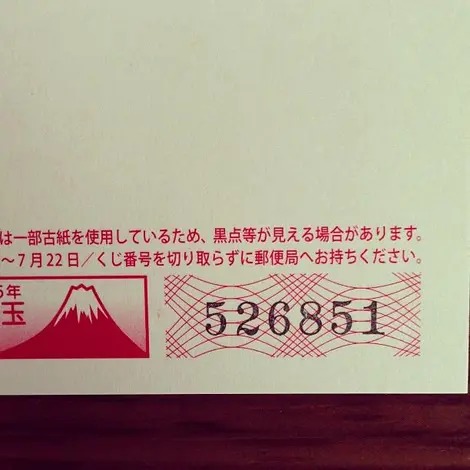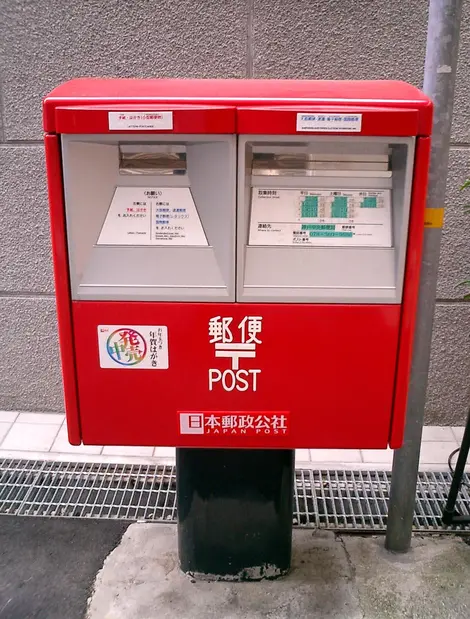Japanese greeting cards 年賀状
The art and the way of wishing a happy new year
Greetings and well wishes in Japan are a long and still highly respected tradition. Nearly two billion greeting cards (nengajo) are exchanged by mail and delivered all together on the morning of January 1!
Greetings in Japan are an institution, one of the essential rites of the Japanese New Year. Desiring them, in the form of a card, in particular, is an obligation. We send our congratulations for the new year of course: "Shinnen akemashite omedeto gozaimasu" (the equivalent of our "Happy New Year!"), but also to show gratitude for the attention we have received during the past year: "Sakunen wa taihen osewa ni narimashita". Without forgetting to ask for benevolence for the coming year: "Kotoshi mo yoroshiku onegai itashimasu" and to pray for the good health of the family.
The list of recipients
The tradition applies particularly in the business world. Your superiors and colleagues will send you their best wishes, and vice versa. Naturally, family and friends are among the recipients, as are your (former) school teachers and anyone who has done you a favor or played a role in your life during the year.
Wishes by the Billion
Each person therefore sends and receives a pack of cards each January 1, about thirty on average for each. Some celebrities even send hundreds. According to Japan Post, for which the New Year is a crucial moment, more than 3.2 billion cards were sold in 2016 and more than 1.7 billion greeting cards were distributed by January 1 in mailboxes!
Digital greetings
Stunning figures prove the weight of traditions and habits in Japan. And yet, these figures are falling: the peak occurred in 2003 when more than 4.4 billion greeting cards were sold by post. The cause of this decrease: digital, which takes precedence over the paper. The sending of e-mails and texts is thus constantly increasing.
A long tradition
The tradition of greetings in Japan dates back to the Nara period (710-794) when it was customary to exchange thanks and congratulations during courtesy visits at the New Year. In the Heian period (794-1192), the use of the letter expands to touch distant people. After the Meiji Restoration (1868) a postal service inspired by the Western system was created, with the first pre-stamped postcards. The exchange of greeting cards for the New Year is established with the postmark dated January 1st. The success was immense.
The Lottery of Wishes
In 1949, the Japanese post office had the idea of adding a lotto game to its pre-stamped greeting cards. Each card has a number on it. A grand draw takes place in mid-January. A first prize equivalent to 1,000 euros is up for grabs, as well as regional specialties.
Respect the form
The Japanese greeting card must respect a few rules. On the front is the recipient's address. On the back, is the message with the zodiac sign of the year. 2017 is the year of the rooster, a symbol of business success. The form and content of the message evolve with time and trends. Some families, especially with children, get creative and make their stamps, calligraphy, or use woodcuts.
Events
Since the 2000s, greeting cards have been made on the computer with printed photos showing the family and children. Wishes are also an opportunity to announce a significant event of the past year (marriage, birth, move, etc.). And if a death occurred in the family the previous year, the latter will send a mourning card (mochu) in November-December to inform of this sad event and prevent people from making the mistake by sending their greetings.





